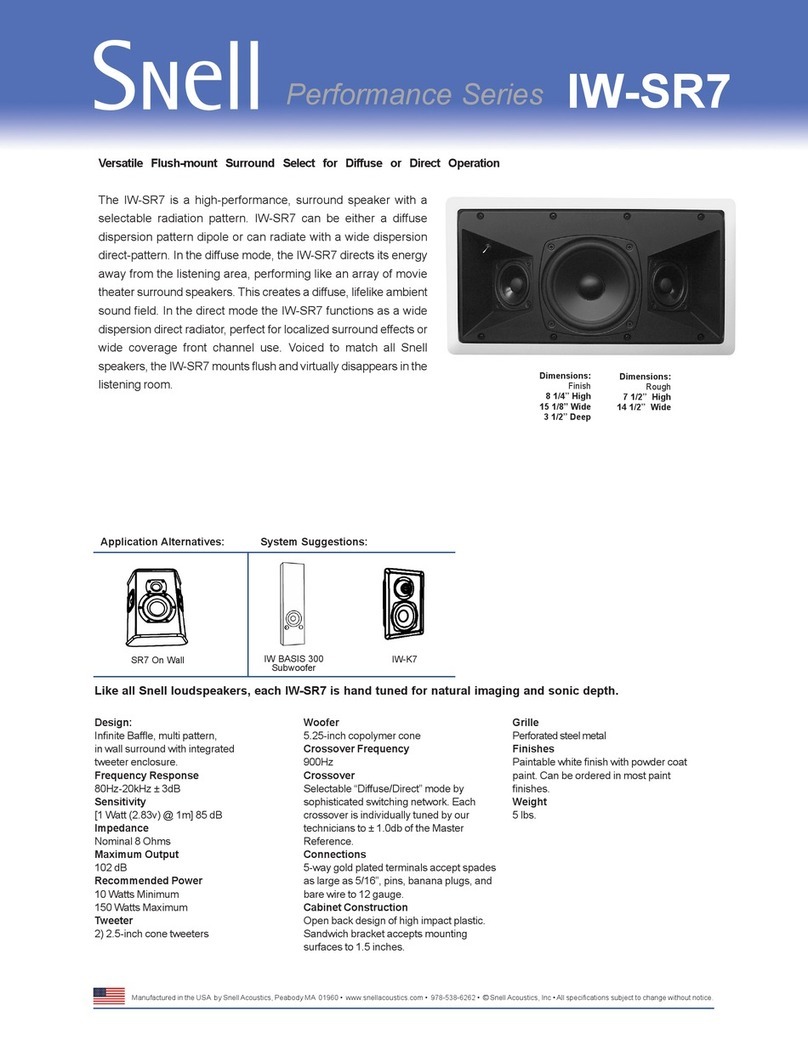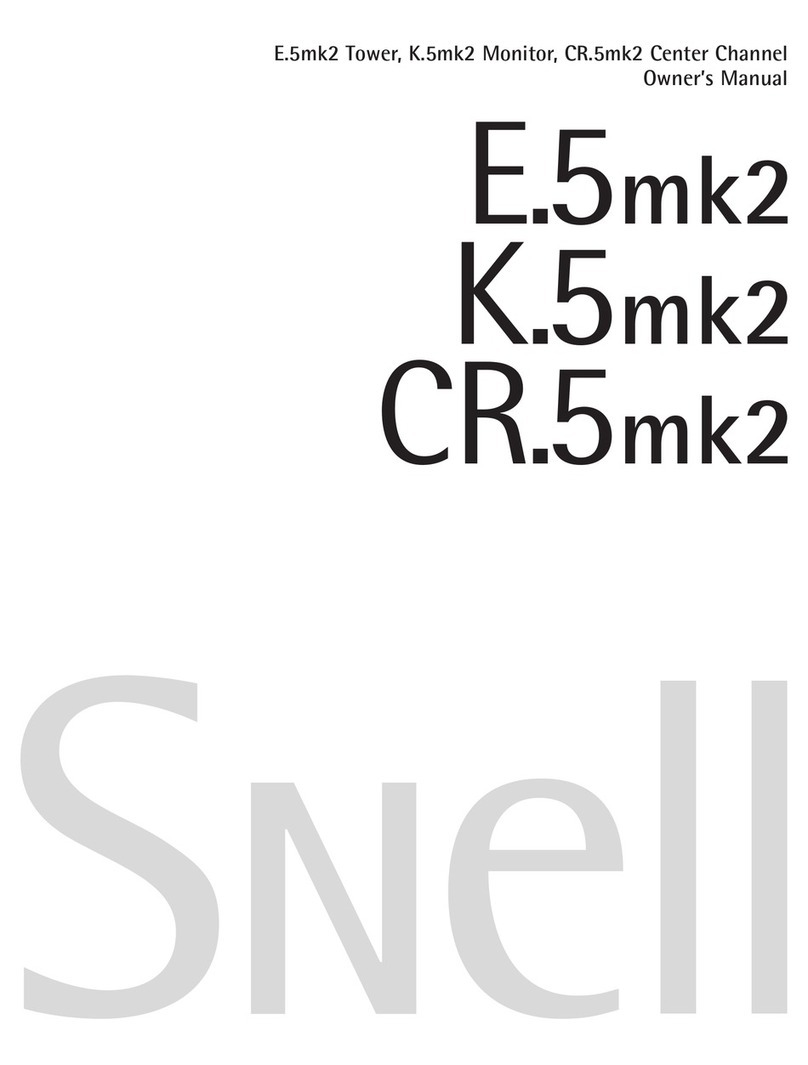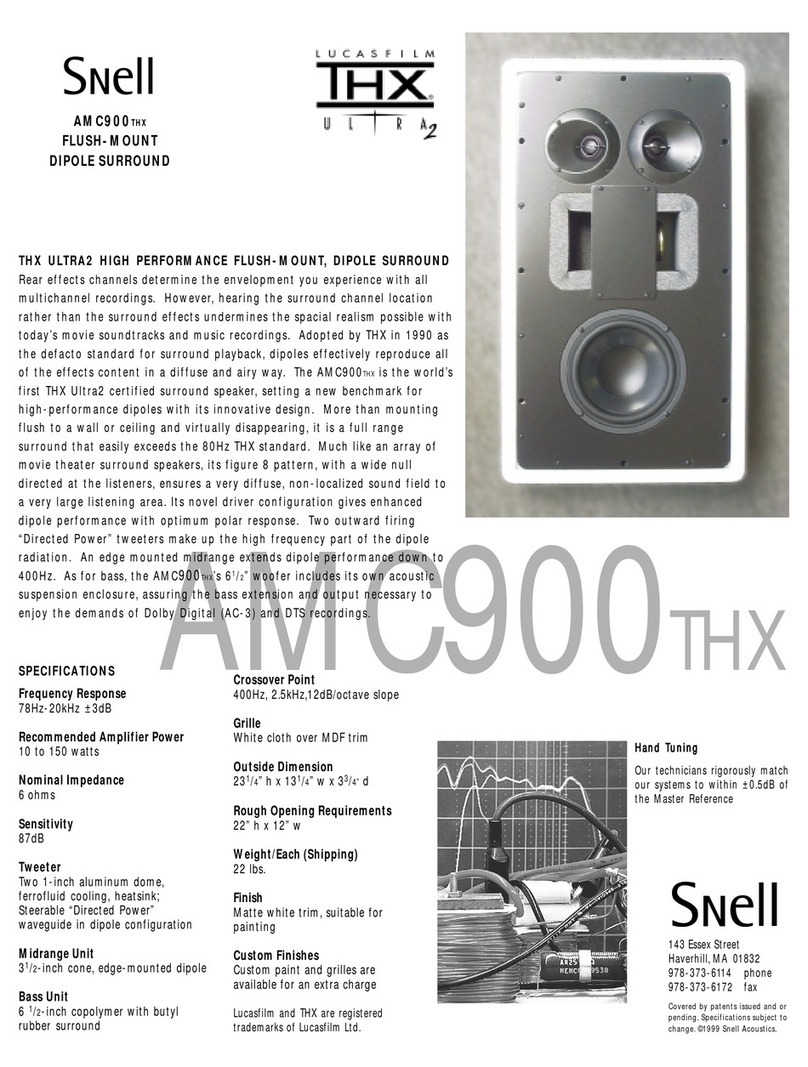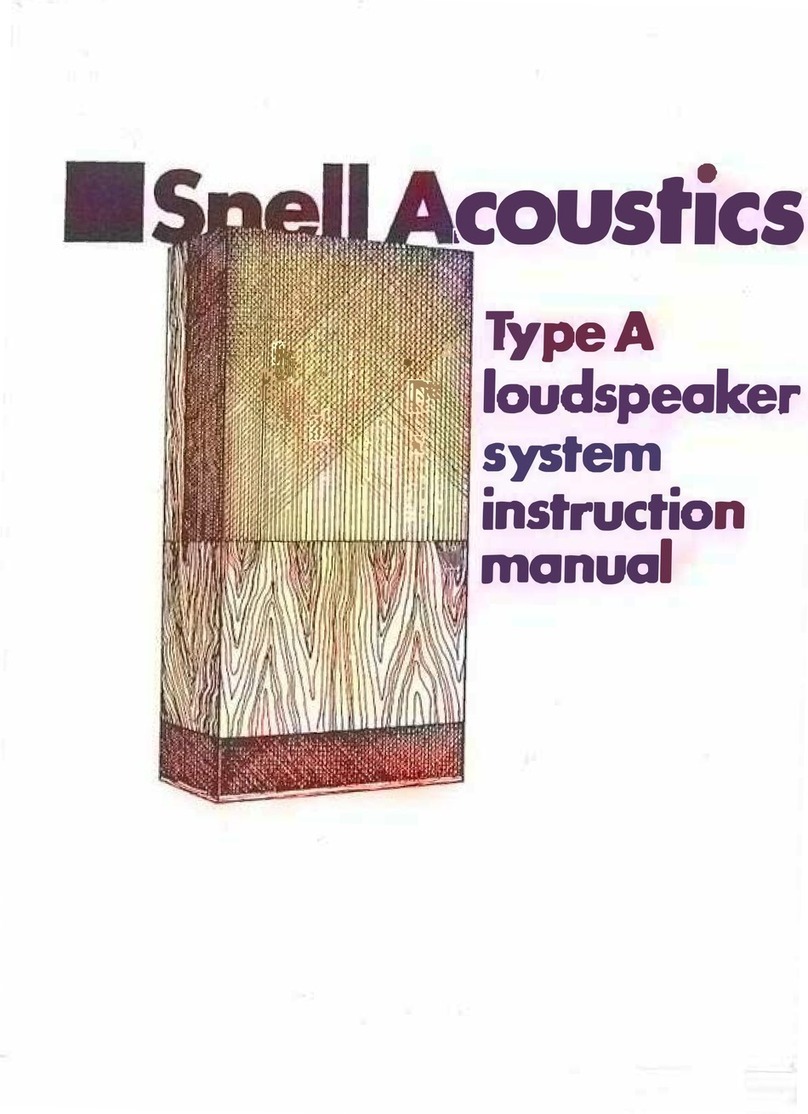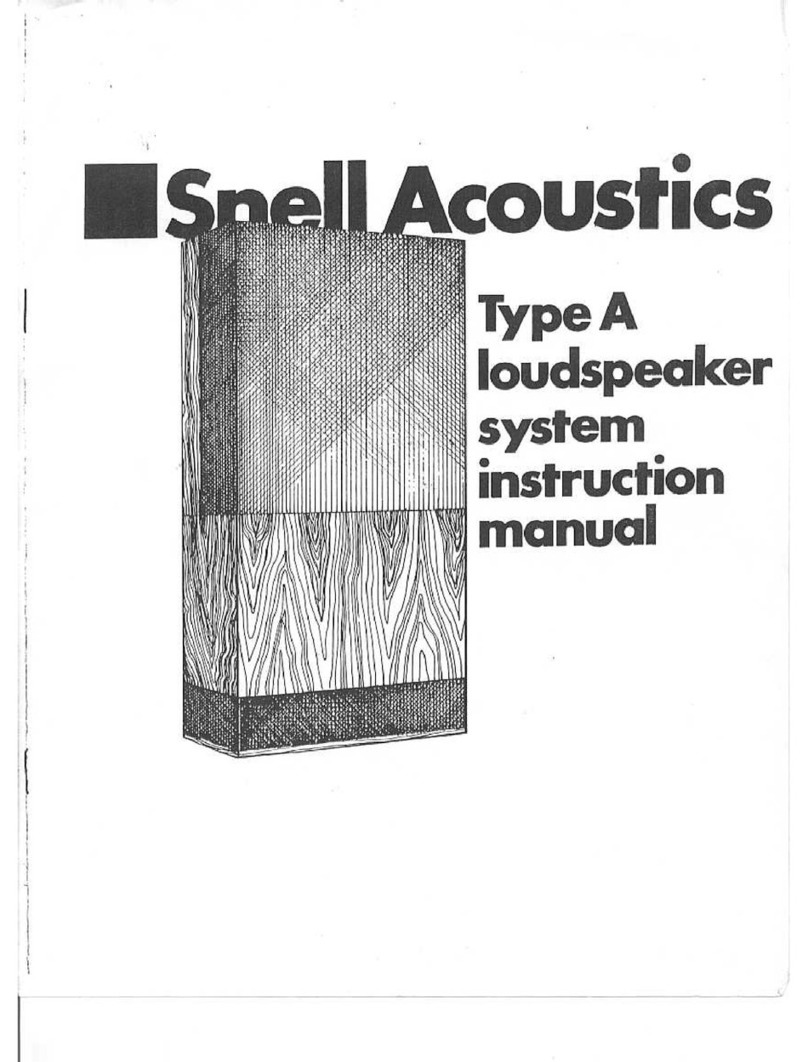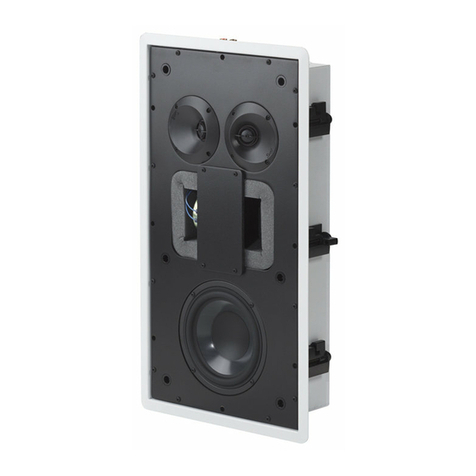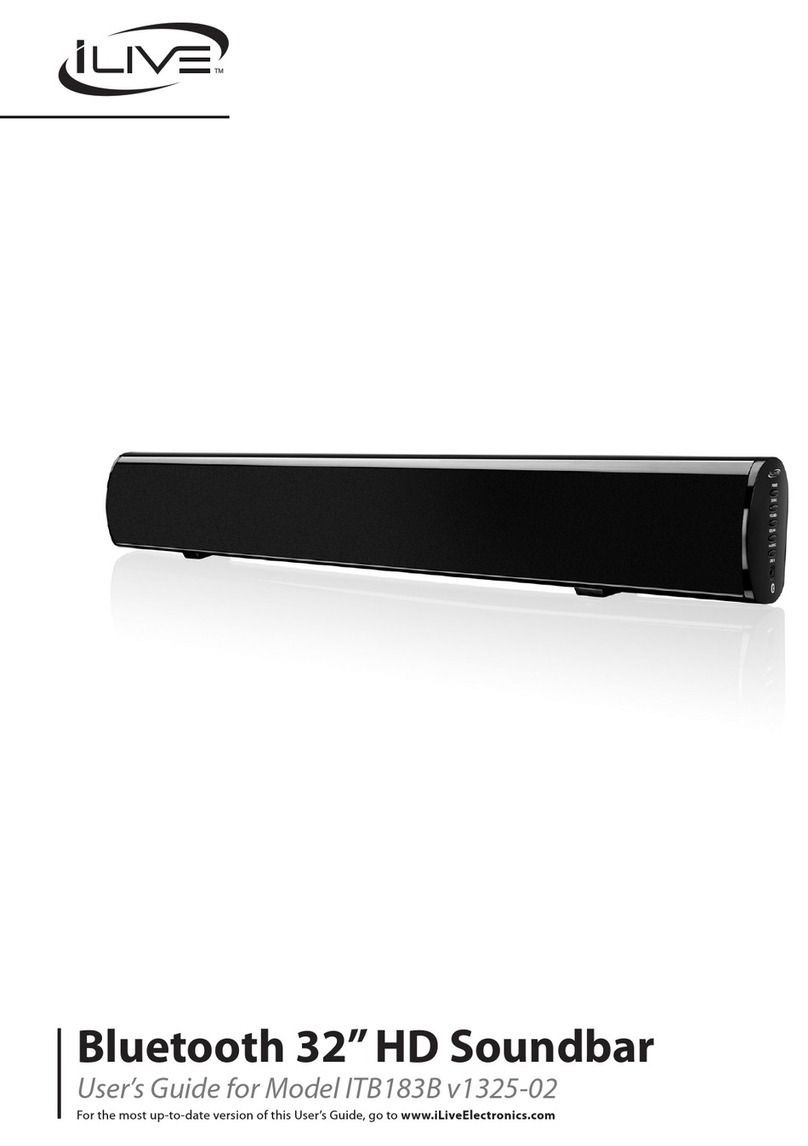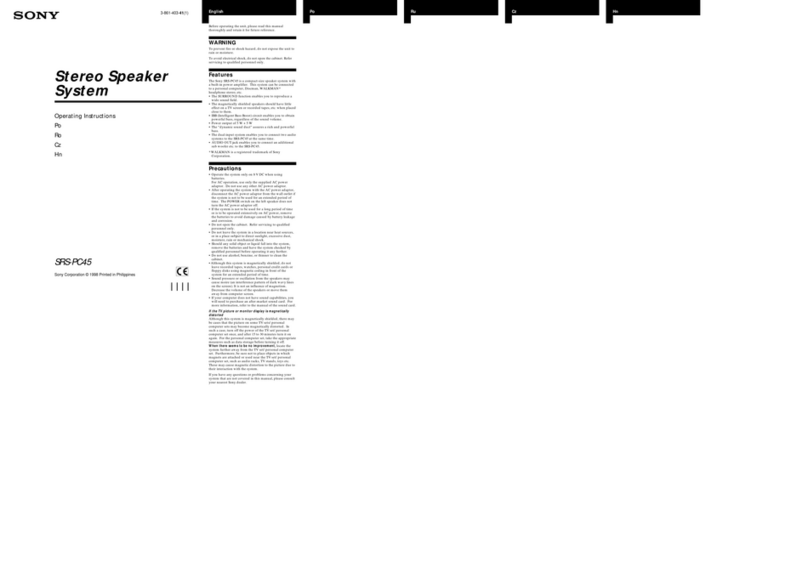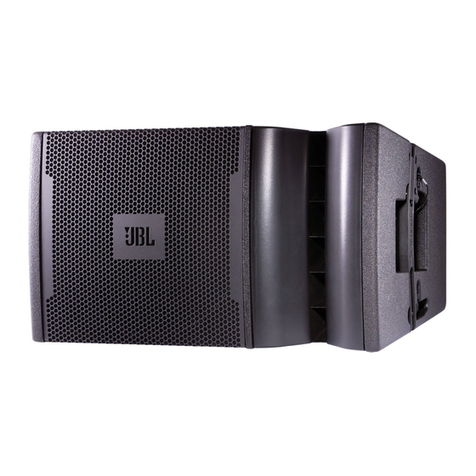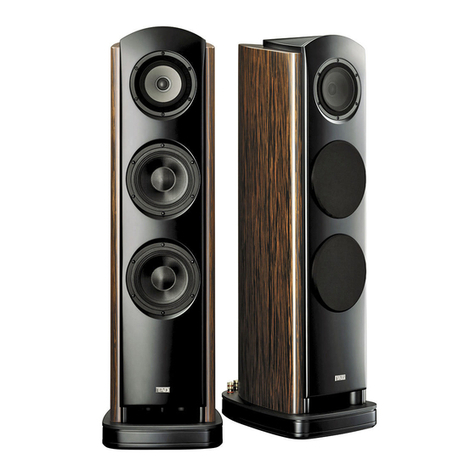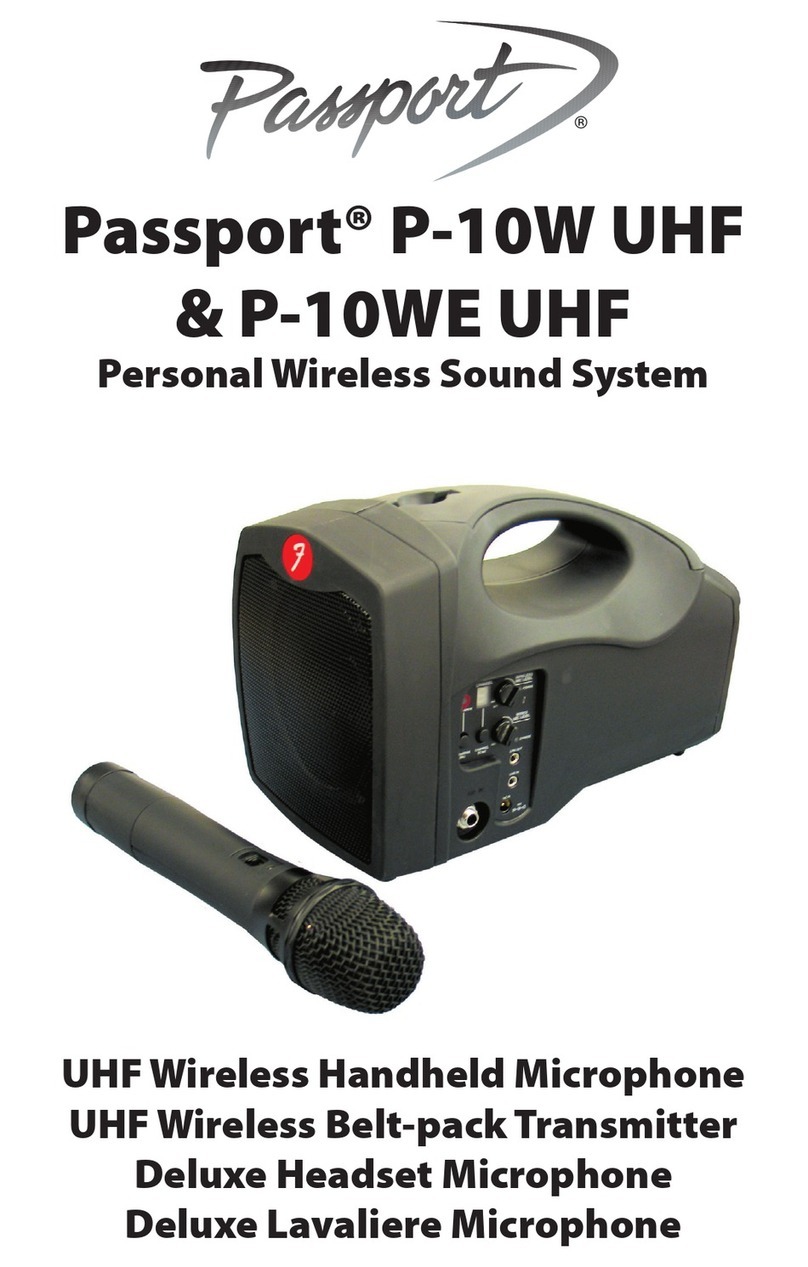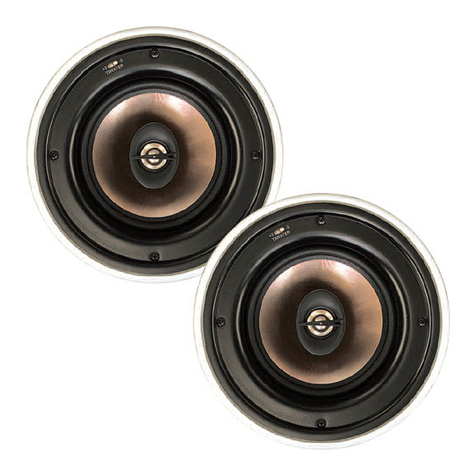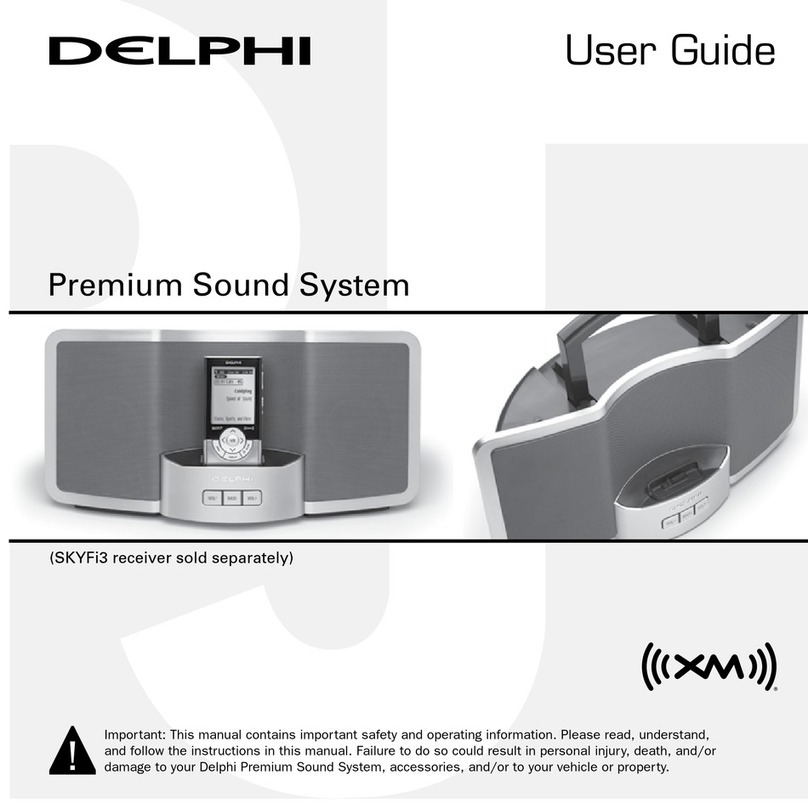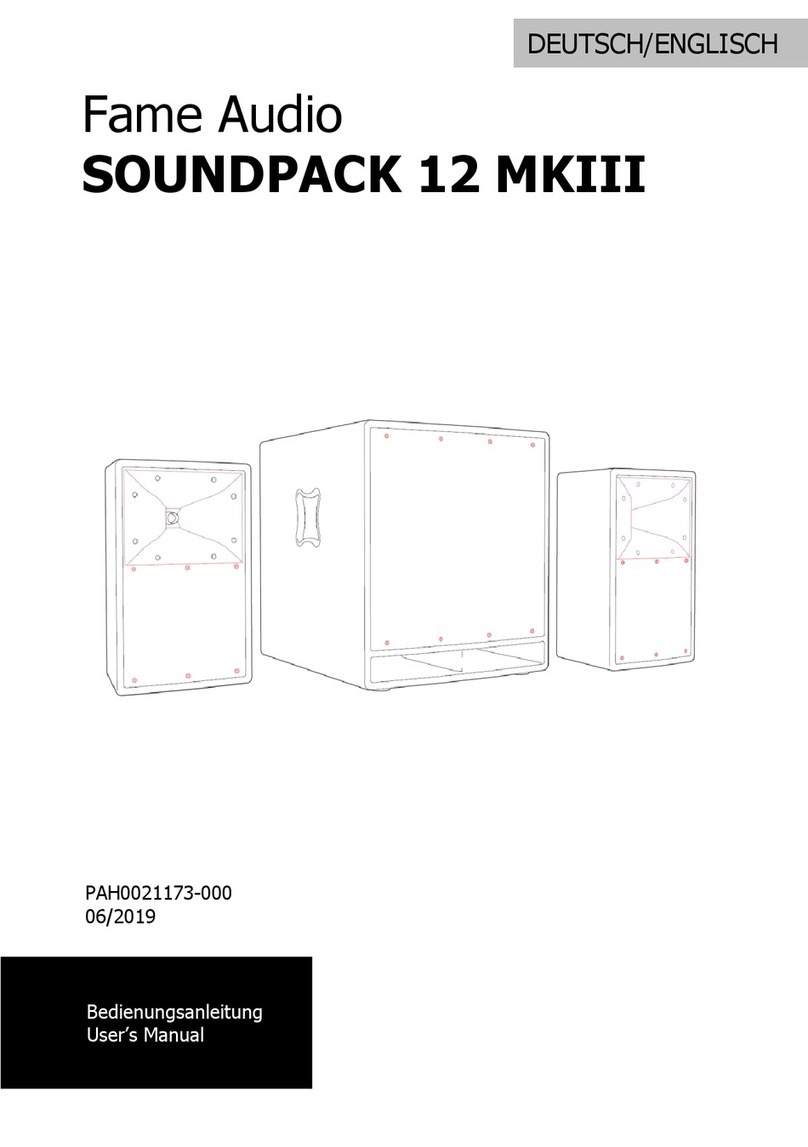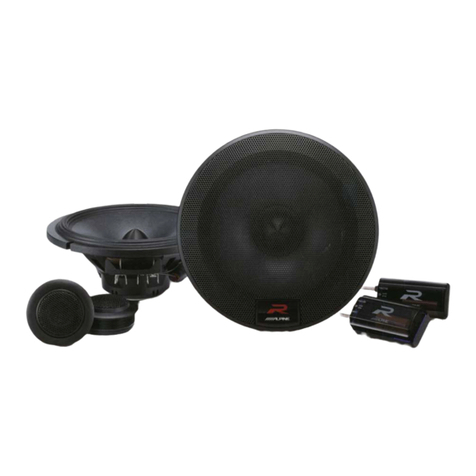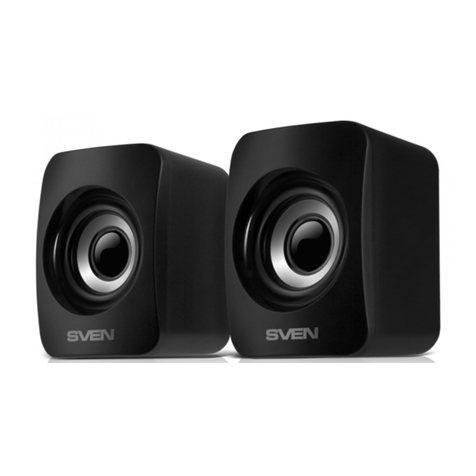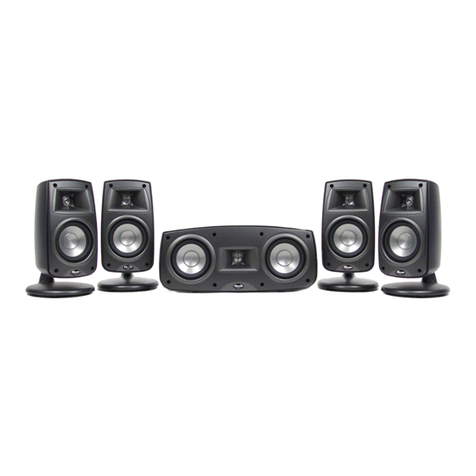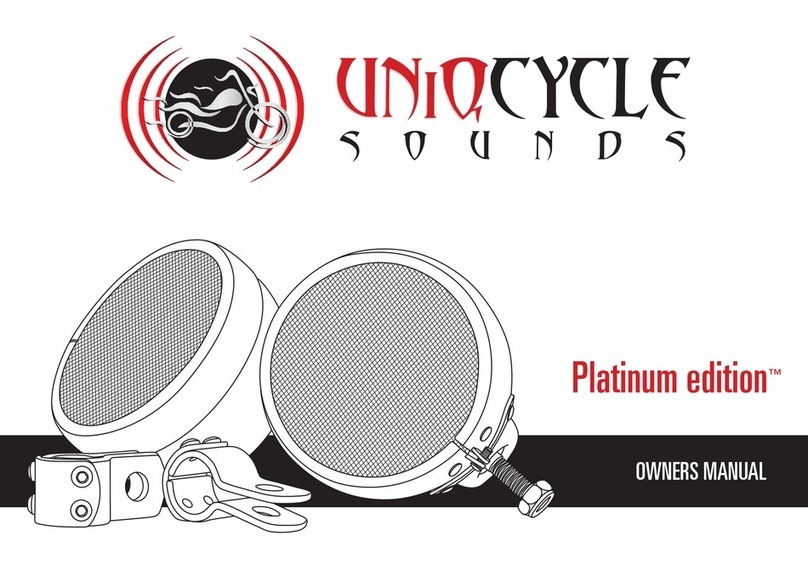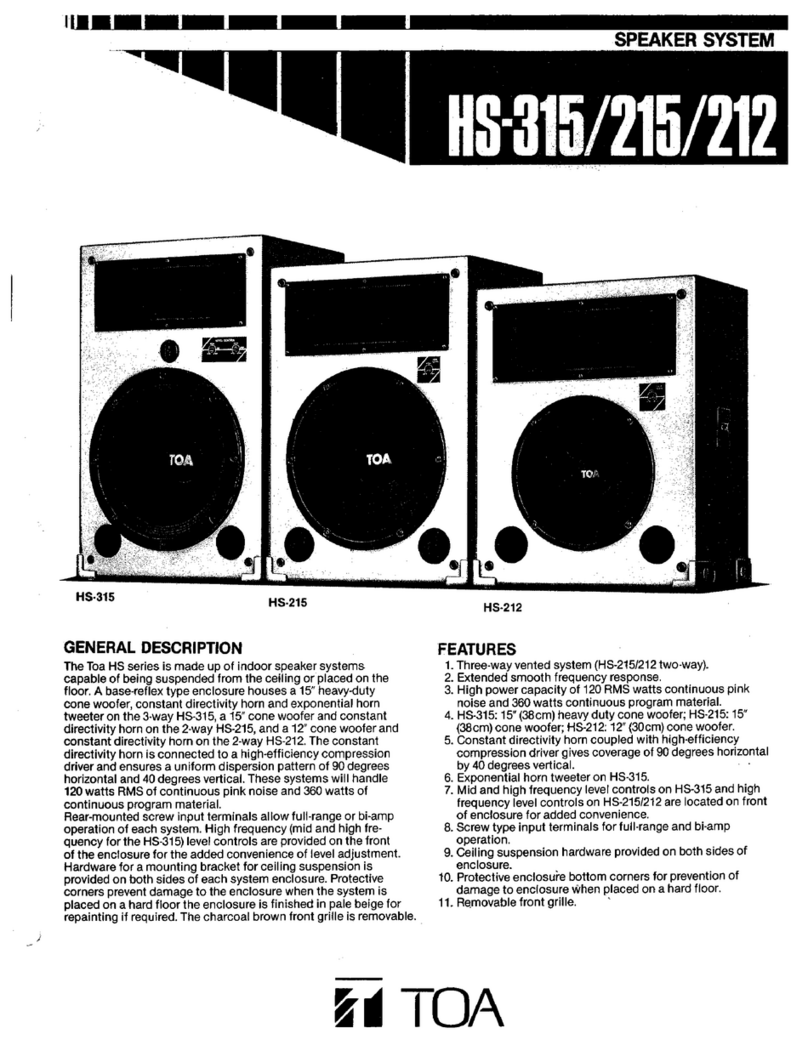Snell B7 User manual

B7
Tower
C7
Tower
D7
Tower
CR70
Center Channel
Owner’s Manual

2
SPECIFICATIONS
Frequency Response (±3dB)
Recommended Amplifier
Nominal Impedance
Sensitivity (2.83v at 1m)
Tweeter/Midrange
Bass Drivers
Crossover Point
Boundary Compensation
Grille
Dimensions
(HxWxD)
Finish*
Shipping Weight
* Custom paint and
grilles are available
for an extra charge
C7
35 Hz–20 kHz
50–300W
4 ohms
89dB SPL
1 inch SEAS silk dome,
dual 41/2-inch treated
paper midranges,
1 inch rear tweeter
Dual 8-inch (203mm)
aluminum cone,
“Force Balanced” mounting
300 Hz / 2.8 khz
Yes
Perforated steel with
black powder-coat paint
471/4x 91/2x 16 inches
(1200 x 241 x 406mm)
Natural cherry or
Black-painted walnut
115 lbs (52.2 kg) / each
B7
35 Hz–20 kHz
50–300W
4 ohms
89dB SPL
1 inch SEAS silk dome,
dual 41/2-inch machined
magnesium midranges,
1 inch rear tweeter
Dual 8-inch (203mm)
aluminum cone,
“Force Balanced” mounting
300 Hz / 2.8 khz
Yes
Perforated steel with
black powder-coat paint
471/4x 91/2x 16 inches
(1200 x 241 x 406mm)
Natural cherry or
Black-painted walnut
115 lbs (52.2 kg) / each
B7 / C7 C7
D7D7 CR70
B7
Port
Rear Tweeter
Port
Rear Tweeter

3
B7 / C7 C7
D7D7 CR70
B7
Port
Rear Tweeter
Port
Rear Tweeter
D7
38 Hz-20 kHz
50–250W
4 ohms
90dB SPL
1” SEAS silk dome,
1 inch rear tweeter
Dual 61/2-inch (165mm) SEAS
treated paper cone,
6mm excursion
400 Hz / 2kHz
Yes
Perforated steel with
black powder-coat paint
401/2x 8 x 12 inches
(1029 x 203 x 305mm)
Natural cherry or
Black-painted walnut
66 lbs (30 kg) / each
CR70
62 Hz-22 kHz
50–250W
4 ohms
89dB SPL
1 inch SEAS silk dome, with
a 4-inch treated paper
midrange
Dual 61/2-inch (165mm) SEAS
treated paper cone,
6mm excursion
375 Hz / 3.2kHz
Yes
Perforated steel with
black powder-coat paint
8 x 257/8x 12 inches
(203 x 657 x 305mm)
Natural cherry or
Black-painted oak
52 lbs (23.5kg) / each

4
PRODUCT DESCRIPTION
The Snell B7, C7 and D7 are high performance tower-configuration loudspeakers, suitable for
use in a wide variety of applications. The CR70 is a center channel speaker designed and voiced
to work with the other Series 7 models. Most models feature a D’Appolito Array MTM design. All
the Series 7 models feature exceptional cabinet construction, superior drive units, and complex
crossovers, which contribute to their exceptional sound quality.
The Snell B7, C7 and D7 are ideal for use as:
/The main speakers of a music system
/Front channel speakers of a surround system
Note: The four legs supplied with the B7, C7 and D7
must
be attached to the base of the
cabinet. This is necessary for stability as well as bass performannce. The legs and mounting
hardware are in the accessory box shipped with each speaker. Floor spikes are included
For A/V systems the CR70 is the perfect center channel speaker for the use in systems with the
other Series 7 models
These Snell loudspeakers reveal the depth, impact and nuance in every piece of music and
every movie soundtrack. Handcrafted in Massachusetts from real wood and solid aluminum,
the elegant Series 7 models, with their soft lines and superb finish, plays perfect host to the
technology inside.
INSTALLING THE FEET
Before the B7, C7 and D7 are connected you must install the feet. The feet improve the stability
of the speakers and helps avoid injury or damage from the speaker falling over.
Carefully turn the speaker over
on its side, then onto its top.
Do this on a carpeted surface
to avoid damage to the cabinet
finish. Insert the four feet into
the openings in the corners
of the cabinet. Insert the foot
mounting bolts through the
bottom of the cabinet. Tighted
the bolts with the supplied hex
wrench.
If you are using the supplied
carpet spikes, assemble the
spikes and jam nuts and thread them into the feet. Do not tighten the jam nuts until the speak-
ers is turned back upright and the spikes have been adjusted to compensate for any irregulari-
ties in the floor.

5
HOW TO PLACE YOUR SPEAKER SYSTEMS
Front Speaker Separation
The distance between the front speakers in a dedicated music system, or an A/V system, deter-
mines the width of the stereo image. If the speakers are placed too close together, the image
will be too narrow; too far apart and the blend will suffer, creating a hole in the middle. When
properly placed, your speakers will create a continuum of “virtual images” from left to right,
with an illusion of sound outside, in front, and behind the speaker systems.
/We recommend an angular
separation of about 50
degrees (when viewed from
above). This is equivalent
to a separation between
the speaker systems that is
about 85% of the distance
from the speakers to the
listener location.
Speaker Distance
The left and right speakers both
be the same distance from the
listener location. We advise
using a tape measure to equal-
ize these two distances to the
primary listening position. The
results will be well worth the
time and effort.
Center Channel Speaker Placement
In a multichannel system, the center channel keeps dialogue or soundtrack information cen-
tered. Therefore, its placement relative to the left and right speakers is critical. The CR70 should
be place directly above or below the television screen in an A/V system. Use the location that is
closest to ear level. Place the CR70 with its front edge as for forward as practical. Try to have
the front of the speaker flush with the front of the screen.
Avoid placing the CR70 in a partially enclosed area. This can produce response errors in the
lower midrange. An open area, near a wall, is the best location.
The CR70 speakers are designed to produce a very smooth response over as wide a range of
radiated angles as possible. Like all speakers of this type, the response evenness is maintained
over a wider horizontal arc than vertical. Take this into account when placing and aiming your
speakers.
/Try to place the CR70 so it is within 2 feet (60cm) of the height of the midrange/tweeter
arrays of the left and right front speakers.
/If the speakers are mounted very high or very low, aim the center of the speaker to your
ear level while listening in a seated position.
50°
Distance Between Speakers =
0.85 x Distance to Listening Area
Distance to Listening Area

6
Toe-In
“Toe-in” refers to the angling of the speakers toward the listener location. Toe-in is a matter of
taste. As the degree of toe-in increases, the stereo effect becomes more direct-sounding, like
a pair of headphones. Speakers not toed-in will give a more diffuse sound with a less defined
central image. In an A/V system with a center channel speaker it will won’t be necessary to toe-
in the left and right speakers unless they are separa ted by more than the ideal amount.
Location Affects Bass
As speakers are moved closer to rigid room boundaries - the walls, the floor, and the ceiling
the deep bass part of the sound range is accentuated. However, if speakers are too close to the
room boundaries, particularly corners, the bass output can be uneven. Furthermore, the B7,
C7 and D7 should be placed at least 18-inches (0.5m) from the wall behind them so the bass
port and rear tweeter will perform properly. Experiment until you find the best overall sound
for your room. Choose a musical selection with a strong, continuous bass line. Repeat a short
section until you have a firm impression of it in your mind, then try another speaker location.
Repeat this process until you are content with the bass response you are getting. Moving your
listening position will affect the sound as much as moving the speakers. Try different listener
locations as well as speaker locations.
CONNECTING THE SPEAKERS
Warning! To prevent electrical shock, always switch off the amplifier or receiver when making
connections to the speaker system.
Choosing Cable
We recommend 16 gauge cable or thicker for runs up to 25 feet (8m) and 12 gauge wire or
thicker for longer runs. (We use a custom-configured 12 gauge oxygen-free cable in our cross-
over networks.)
Connecting with bare wire:
/Insert bare wire into holes and tighten.
Connecting with banana plugs, pins or spade lugs:
/The gold-plated binding posts accept standard banana plugs
and pins, and can accommodate spade lugs to 5/16-inch.
Basic Connections
/Keep the speaker terminal jumper straps in
place
/Connect the wires to any of the terminal sets.
/When making connections, be sure to connect
+ to + (red) and - to - (black).

7
Bi-Wiring
Performance can be improved by using two
sets of speaker wires to connect the speakers
to the amplifier
/Use equal lengths of the same kind of
cable when bi-wiring each speaker
/Unscrew the of terminals and remove the
jumper straps between the woofer and
tweeter or, on the B7 and C7, between
the woofer and midrange.
/When making connections, be sure to
connect + to + (red) and - to - (black).
Bi-Amplifying
Performance can be further imporoved by using multiple amplifiers to drive the speakers. There
are two ways of doing this.
Using One Amplifier for the Bass and One for the High End
/Unscrew the of terminals and
remove the jumper straps
between the woofer and tweeter,
or on the B7 and C7, between
the woofer and midrange.
/Connect the cables from the
bottom set of terminals to the
amplifier driving the bass unit
/Connect the cables from the tap
set of terminals to the amplifier
driving the tweeters
/When making connections, be
sure to connect + to + (red) and
- to - (black)
/Do not use an external cross-
over. It will interact with the
phase and frequency response of
the speaker’.
D7 / CR70B7 / C7
amplifier or receiver
Tweeter
Midrange
Woofer
Jumper Straps Removed
D7 / CR70B7 / C7
low-frequency amplifier
high-frequency amplifier
Tweeter
Midrange
Woofer
Jumper Strap Removed

8
Using One Amplifier for Each Speaker
/Use two identical
amplifiers
/Unscrew the of
terminals and
remove the jumper
straps between the
woofer and tweeter
or, on the B7 and C7,
between the woofer
and midrange.
/Connect the cables
from the bottom set
of terminals to the
first amplifier’s right
channel
/Connect the cables
from the top set of terminals to the first amplifier’s left channel
/Repeat steps 2 and 3 for the second amplifier
Tri-Wiring and Tri-Amplifying
The B7 and C7 have three sets of terminals—one each for the tweeter, midrange and woofer.
You can tri-wire the speakers, although the performance improvement will be minor and it can
be difficult to connect three wires to the ampifier terminals. Tri-amplifying the speakers will
produce a more significant improvement, although the difference won’t be as great as the dif-
ference between a conventional system and a bi-amplified system.
To tri-amplify the speakers, remove all the jumper straps. Refer to the “Using One Amplifier for
the Bass and One for the High End” section of this manual and use the same procedure. Con-
nect three identical amplifiers to the left and right tweeters, midranges and woofers.
CONTROL SETTINGS
Depending on the model, your Series 7 speakers have two or three control switches that adjust
the sound of the speaker to suit the room acoustics and installation location. These switches are
located near the connection terminals.
The Boundary Switch
In some situations it may be best to position the speakers in a location that does not produce
the best overall sound balance. A common example is in audio/video installations where, in
order get the best sound image, the speakers must be placed next to a large cabinet or big
screen television. This can cause uneven response in the upper bass and lower midrange which
can make voices sound unnatural. The Snell B7, C7, D7 and CR70 feature a Boundary Switch
that can help restore smooth response in such situations.
If the speaker is located where it has at least 12 inches (30cm) of clearance on three sides, use
the Normal switch setting. If it is placed next to a large object, try the Boundary switch position
to see if it results in smoother response.
D7 / CR70B7 / D7
low-frequency amplifier
Tweeter
Midrange
Woofer
Jumper Strap Removed

9
Tweeter Level Switch
The B7, C7 and CR70 have a three position switch to adjust the output level of the tweeter. In
most rooms, the “Flat” position will produce the best sound. In rooms that have plush carpet-
ing, heavily upholstered furniture and other sound absorbing furnishings, try the switch in the
“Boost” position. In rooms that have more hard reflective surfaces, try the “Cut” position.
Rear Tweeter Switch
The B7 and C7 have a rear tweeter on/off switch. Typically the tweeter should be left on. In
some rooms, particulary those that have more hard reflective surfaces, the rear tweeter can
detract from the stereo image. Set the switch to “Off” in such situations.
Using With a Multichannel Surround Processor
When using a subwoofer:
/Select the SMALL setting on your receiver or processor for your main and center channels.
This routes all bass information (typically below 100Hz) to your subwoofer.
When not using a subwoofer:
/Select the LARGE setting on your receiver or processor for your main speakers. This routes
all bass information (typically below 100Hz) to your main speakers. Otherwise, bass infor-
mation will be lost.
Matching the sound levels of each speaker:
/Your home theater system most likely includes a test signal that simplifies level matching.
Refer to the instructions provided with these electronics.
HOW TO CARE FOR YOUR SPEAKERS
/Use a soft terry cloth towel slightly dampened with water, glass cleaner, or a diluted mild
detergent. The towel should be just damp enough to wipe the surface clean without leav-
ing a trail of moisture.
/Do not use abrasive cleaners or any cleaner containing chemicals harsher than those
found in glass cleaner.
LISTENING LEVELS AND POWER HANDLING
/The power recommendation for the system assumes you will operate the amplifier in a way
that will not produce distortion. All speakers con be damaged by even a modest amplifier
if it is producing distortion. If you hear a gritty noise or other signs of strain, turn down
the volume. Prolonged or repeated operation of your speakers with a distorted signal can
cause damage that is not covered by the warranty. It is especially important that you
do not overdrive the bass capability of smaller speakers. Watch for noises, such as pops,
caused by the music’s bass line. Use of the loudness control and/or full bass boost at
louder volumes is likely to overdrive the woofer. Use such controls sparingly.

10
LIMITED WARRANTY
For five years from the date of purchase, Snell Acoustics will repair for the original owner any
defect in materials or workmanship that occurs in normal use of the speaker system, without
charge for parts and labor.
Your responsibilities are to use the product according to the instructions supplied, to provide
safe and secure transportation to an authorized Snell Acoustics service representative, and to
present proof of purchase from an authorized Snell dealer in the form of your sales slip when
requesting service.
Excluded from this warranty is damage that results from abuse, misuse, accidents, shipping,
repairs, or modifications by anyone other than an authorized Snell Acoustics service representa-
tive. This warranty is void if the serial number has been removed or defaced.
If Service Seems Necessary
Contact the dealer from whom you purchased the speaker system.
If that is not possible, call us at 978-538-6262, or write to:
Snell Acoustics
300 Jubilee Drive
Peabody, MA 01960
We will promptly advise you of what action to take. If it is necessary to return your speaker
system to the factory, please ship it prepaid in the original factory packaging. Please note that
Snell Acoustics will not be held liable for shipping damage due to improper packaging. After it
has been repaired, we will return it freight prepaid in the U.S. or Canada.
For EU Customers Only
This symbol found on the product indicates that the product must not be disposed
of with household waste. Instead, it may be placed in a separate collection facility
for electronic waste or returned to a retailer when purchasing similar product. The
producer paid to recycle this product. Doing this contributes to reuse and recycling,
minimizes adverse effects on the environment and human health and avoids any
fines for incorrect disposal.


300 Jubilee Drive, P.O. Box 3717
Peabody, MA 01961-3717
phone: 978-538-6262
fax: 978-538-6266
email: [email protected]
www.snellacoustics.com
©2009 Snell Acoustics. All Rights Reserved.
Specifications are subject to change without notice.
Covered by patents issued and/or pending.
Part #542-1040
Other manuals for B7
1
This manual suits for next models
3
Table of contents
Other Snell Speakers System manuals

